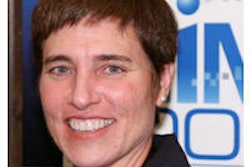
If you're a Certified Imaging Informatics Professional (CIIP) managing your facility's PACS, chances are you're either down in the weeds, up in the trees, or out in the forest, according to a presentation at the recent Society for Imaging Informatics in Medicine (SIIM) regional meeting in Philadelphia.
These three categories of CIIP responsibilities come from Sgt. 1st Class Michael Joslin, deputy project manager for image management systems of the U.S. Army, who discussed the evolving roles of CIIPs at the SIIM meeting in March.
Be they in the weeds, trees, or forest, CIIPs have many roles they can play, he said. Advancing to higher levels of responsibility, however, requires a blend of traits such as strong training, an ever-present desire to learn, and good communication skills.
Familiarity with the Integrating the Healthcare Enterprise (IHE) initiative is also increasingly important, and it's critical to be involved in project management tasks and to keep a sharp focus on imaging workflow, Joslin said.
Imaging informatics
The topic of who should manage PACS has been debated over the years. Some feel that radiology should be responsible, as radiologists are the main users of PACS. Radiology departments also understand their workflow, and some have felt that IT departments don't respond fast enough, Joslin said.
On the other side of the coin, IT departments feel that PACS is now an enterprise-level system, and that IT staff members have the best knowledge of information systems and networking. IT departments may also have the perception that radiology is focused only on radiology's needs, he said.
Enter imaging informatics.
"That's the whole point of imaging informatics; it's a blending of the two," he said.
The purpose of the CIIP program is to have a person who can understand and function in both worlds, Joslin said.
"If your organization doesn't have somebody that can do these capabilities, you're probably not going to ever be performing the way you really should be," he said.
CIIP backgrounds
CIIPs tend to come from either a clinical background or an IT background. Each background has its strengths, Joslin said.
 Sgt. Michael Joslin of the U.S. Army.
Sgt. Michael Joslin of the U.S. Army.
Those with a clinical background understand the concept that patients come first. They also have a grasp of medical terminology and the all-important issue of clinical workflow.
"That's what the end user sees," he said. "If clinical workflow is not good, they're not going to use the system. If it slows them down, they're not going to want to use the system. It all boils down to how to make that easier for the end user, whether it be the radiologist, the clinician, or somebody else who has to use the system."
Ultimately, it's all about IT helping patient care, he said.
On the other side, those with an IT background understand the concept of data integrity. They also understand IT terminology and network workflow.
Network workflow is very important, especially if you start linking multiple facilities together, he said.
Different roles
Joslin classifies the various CIIP roles into three categories: weeds, trees, or forest.
In the "weeds" level, a CIIP is typically in charge of a single section or group at a facility. A CIIP at this level will spend 90% of his or her time putting out fires, he said.
"They've got their pager going off every 20 minutes; they're running around to this workstation and that workstation," he said. "You're never going to get away from that. There's always going to be somebody doing that."
Their primary focus is to keep things running, which includes connecting devices, performing backups correctly, and building network switches.
"Back when I was doing this level, I always had a big whiteboard with a long list of projects that I wanted to do that I never got to," he said.
Data management is a critical task at this level.
"This is critical; you need clean data," he said. "For a single facility, it's a little less important, but as soon as you start to talk about merging multiple facilities together, this magnifies exponentially."
Up to the trees
As CIIPs advance to the "trees" level, they can really prove their worth. They can start to look at how imaging affects the entire facility, including how to integrate cardiology, dermatology, and ophthalmology users, Joslin said.
They should also understand how workflow affects systems and users, and be able to express the benefits of one use case over another at a level people can understand.
An annoying part of this level, though, is having to attend more meetings, he said.
"You're going to wind up spending a lot more time just talking about doing stuff rather than actually doing it," he said.
Meetings do offer the advantage of being able to advertise and advocate for imaging, which is valuable as hospital resources are being sought after and doled out.
"Everybody wants money and everybody wants resources to do their projects," he said. "This is where you have a chance to have some influence and advise people on how to do that."
This enables CIIPs to advocate that PACS is not just a radiology function, Joslin said.
Seeing the forest
The next level, the "forest," involves tackling full program management, including managing the system life cycle and determining how to coordinate activities at multiple facilities. Responsibilities also include preparing for future image informatics needs.
"It's about where you want to be in five years, 10 years, and then how you build a path to get there," he said.
CIIPs who reach this level are also evaluating the ripple effects of change, such as determining how changes to one system affect other systems at the institution.
"That's going to be what you have to start looking at," he said. "It's not just about you, it's how you interact with everybody else."
It's also important to implement standardization in policies and equipment, he said.
Getting to the next level
Communication skills are important to advance to the next level, Joslin said. Also, volunteer to help but don't over commit, and share knowledge.
"I'm sure everybody's worked with that one person in their organization who doesn't want anybody else to know what they do because they're afraid that if somebody else knows, then they may lose their job," he said. "Don't be that person. Every time you go someplace to fix a piece of equipment and do something, explain to whomever it is you're talking to how to fix it themselves. It will save you the time of having to go back and fix it again the second time."
Be a people person: "If you don't make connections, you're not going to get anywhere," he said.
And never pass up a learning opportunity. "Every single time somebody comes to your area to fix anything, ask them what they're doing," he said.
Building knowledge
As for specific imaging informatics skills to focus on to get ahead, training is important. A number of resources are available, including SIIM's IIP Bootcamp.
Also, knowledge of the IHE initiative will be invaluable.
"If you're not familiar with IHE, start reading up on it," he said. "Everything's going this way; all the vendors are now trying to support it. This is going to get us through the next 10 years until something better comes along."
Optimizing imaging workflow is also important because that's what the user sees, he said.
"They don't care what server you have in the back room," Joslin said. "All they care about is how does it work and does it work better for them."
It's also a good idea to get involved in project management, including the acquisition of new imaging systems.
Joslin closed by noting that you need three things to be successful in anything: skill, drive, and opportunity.
"You miss any one of those, you're not going to get anywhere," he said.
In addition, you have to be the "go-to" person at your current level before you can be the "go-to person at the next level," he said.




















